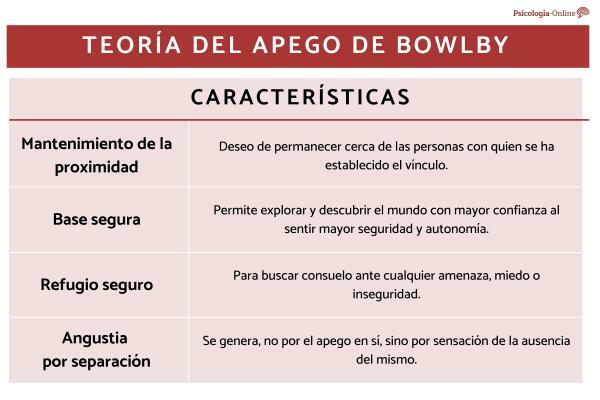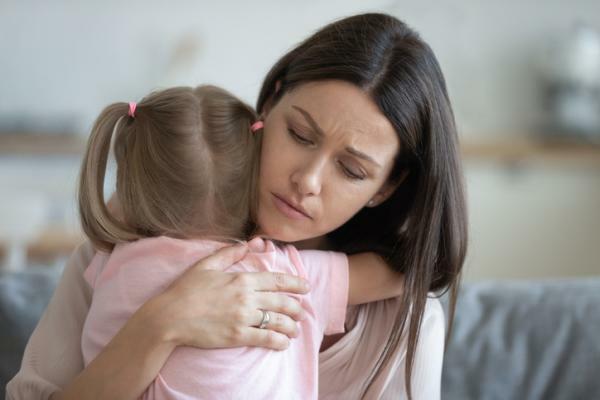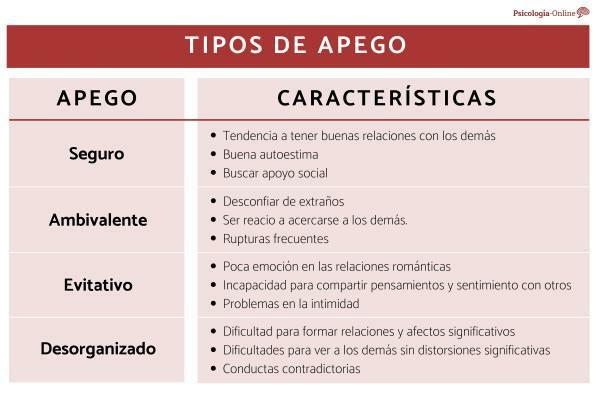
Attachment is one of the strongest emotional ties that human beings experience, which entails seeking closeness with loved ones, especially in moments of sadness and insecurity. Although the concept of attachment has its origin in the theories about love that Sigmund Freud raised, it really took relevance from the studies of the British psychoanalyst John Bowlby developed between 1969 to 1980. The result of the work carried out by Bowlby in the institutions that sheltered children who were without the mother figure, led to the formulation of Attachment Theory, which is considered the most in-depth research ever done on this theme.
John Bowlby (1907-1990) believed that the attachment formed from early childhood is essential for the later emotional development of the individual. In addition, he argued that it is a lasting connection that occurs naturally in humans. In this online Psychology article, we will explain in detail the Bowlby's theory of attachment, its stages and its main characteristics.
Index
- What is John Bowlby's theory of attachment
- Phases of Bowlby's theory
- Attachment characteristics according to Bowlby's theory
- The types of attachment according to John Bowlby
- Importance of secure attachment according to Bowlby
What is John Bowlby's theory of attachment.
The psychiatrist and psychoanalyst John Bowlby developed attachment theory, in which he states that experiences and links that are created in the early childhood they play a fundamental role for the development and subsequent behavior of human beings.
What does attachment theory say?
John Bowlby's theory states that infants develop an attachment style according to the way they relate to their caregiver. Bowlby argued that attachment is part of human nature. In fact, he started from the belief that our ancestors could not have survived had it not been for the emotional ties they had and that prompted them to work as a team to protect each other others.
Bowlby also drew on the work of Mary Ainsworth for the development of attachment theory and was strongly influenced by Lorenz's imprinting theory. That is why, from birth, boys and girls already come with a biological reprogramming to establish the links necessary to help you survive.
Next, we will see other postulations of Bowlby's theory:
- It states that attachment behaviors are activated by any threat or risk, such as insecurity, fear or separation.
- He states that the afraid towards strangers is a innate survival mechanism and that it has served for the preservation of the human species. In this article you will find more information about What is fear in psychology.
- The babies show certain behaviors that activate proximity with the caregiver or the attachment figure that, in general, is the mother. For example, laughing, crying or crawling are behaviors that are only developed by human beings to activate the alerts of the caregiver or parents.
For all these reasons, Bowlby's theory is based on the fact that human beings, babies and mothers, have an innate need for mutual contact. In this sense, for the baby, the caregiver is a secure base that allows him to explore the world with confidence. If this connection is interrupted, this can have serious consequences for the behavior and subsequent emotional development of the individual.

Phases of Bowlby's theory.
According to the John Bowlby theory, attachment is not formed immediately at birth but goes through different stages or phases. In addition, the most common is that they occur in the mother-child relationship, although they also occur between the baby and her caregiver. Thus, the phases of attachment according to Bowlby's theory are the following:
1. Preattachment phase
The first of the stages of Bowlby's attachment theory that occurs in the first weeks of life. In it, the baby accepts anyone who can offer him security and comfort. This means that the child does not have any preference for someone in particular. In this phase, it is normal for the infant develop innate behaviors to get your caregiver's attention. In addition, it is a fairly weak bond, in which the first signs of attachment are hardly appreciated.
2. Training phase
In general, the second of the phases of Bowlby's theory occurs between 6 weeks of age and 8 months. In it, the first signs of anguish at the separation of his caretaker. However, the infant's special attention to the maternal figure has not yet been observed. In fact, he does not reject interaction with other adults.
3. Attachment phase
This phase of Bowlby's attachment theory begins at 6 to 8 months of age and usually lasts up to 2 years. This is the stage at which the true emotional bond of attachment is formed. The infant will be angry if he is separated from his mother and will even show signs of physical rejection towards other adults. In this phase, the child will do everything possible to get the attention of her mother.
4. Phase of reciprocal relations
Normally, this stage begins from 2 years of age. In it, the child identifies that the absence of the mother is not permanent and, therefore, it will start to calm your anxiety a bit. It is common to see that in this phase of Bowlby's theory, the child plans the mother's return to him, especially due to the appearance of language as a means of communication.
At the end of this stage, a strong bonding and that it will be permanent. Now, the infant knows that his mother and her father are for him, although they are not always physically with him or her.
Attachment characteristics according to Bowlby's theory.
According to John Bowlby, the 4 main characteristics of attachment are the following:
- Maintaining proximity: Desire to remain close to the people with whom the bond has been established.
- Secure base: Allows you to explore and discover the world with greater confidence by feeling greater security and autonomy.
- The shelter to seek comfort in the face of any threat, fear or insecurity.
- The separation distress that is generated, not by the attachment itself, but by the sensation of its absence.
The types of attachment according to John Bowlby.
Likewise, within the attachment theory postulated by John Bowlby, the psychologist stated that there are the following types of attachment:
- TOI hit sure: One of the types of attachment in which the infant has the assurance that the caregiver or parent will not fail him. Thats why he secure attachment it's healthy. This happens because the caregiver provides the minor with enough security, so that assertive and safe communication is established. Likewise, the child will feel safe in front of everything that surrounds him.
- Anxious and ambivalent attachment: It is caused by a very overprotective or ambivalent caregiver, whose care does not generate enough security. The result will be an individual with great anxiety, uncertainty and insecurity. People with this type of attachment develop a lot of fear of separation, do not usually explore the environment with confidence and prefer emotional distance. In this article, we tell you How To Overcome Anxious Attachment.
- Avoidant attachment: Develops when caregivers do not provide a safe environment for the child. As a result, they develop emotional detachment and avoid contact. In the long run, this generates many amounts of stress and even problems to establish interpersonal relationships. In this article you will find more information about the Avoidant attachment: what it is and how to overcome it.
- Disorganized attachment: One of the types of attachment caused by careless and careless behavior of the caregiver. The child does not trust him or her and may even show fear. This causes the child to feel insecure and have explosive reactions because he does not know how to assertively manage his emotions. Find out more about him Disorganized attachment: what is it, characteristics, consequences and how to treat it in this article

Importance of secure attachment according to Bowlby.
A secure attachment will be decisive in developing a healthy mental model in the adult. In fact, allow you to manage your emotions and relationships with others. When a positive concept of attachment develops from infancy, positive feelings of security, well-being, and trust will be experienced.
On the other hand, if the mental model of attachment is negative, feelings such as mistrust, anger and insecurity may arise. Therefore, it is essential to understand the affective bond between caregivers and their children to understand the importance of childhood in human relationships.
This article is merely informative, in Psychology-Online we do not have the power to make a diagnosis or recommend a treatment. We invite you to go to a psychologist to treat your particular case.
If you want to read more articles similar to Bowlby's theory of attachment: what it is, stages and characteristics, we recommend that you enter our category of Evolutionary Psychology.
Bibliography
- Bolwby, John. "Attachment and loss" Attachment, Editorial, Paidos, Spain. Pages: 247 - 285, 393 - 431.
- López, C., & Ramirez, M. (2017). Attachment Chilean Journal of Family Medicine, 6(1), 20-24. http://www.revistachilenademedicinafamiliar.cl/index.php/sochimef/article/view/134
- Moneta, M (2014). Attachment and Loss: Rediscovering John Bowlby. Chilean Journal of Pediatrics. https://scielo.conicyt.cl/scielo.php? pid = S0370-41062014000300001 & script = sci_arttext
- Oliva, A. (2015). "Current state of attachment theory." http://chitita.uta.cl/cursos/2012-1/0000636/recursos/r-9.pdf


